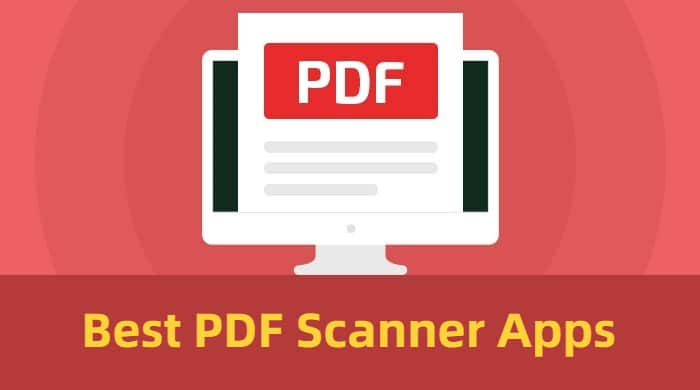Introduction to Scanner Apps

Scanner apps have become indispensable tools for digitizing documents, receipts, and other important information. These applications offer a range of functionalities, from simple QR code scanning to complex document processing with OCR capabilities. This article explores the different types of scanner apps, their core functionalities, and common use cases.
Different Types of Scanner Apps
Scanner apps cater to various needs. Document scanners excel at converting physical documents into digital files, often with Optical Character Recognition (OCR) for text extraction. Receipt scanners automate the process of extracting data from receipts, while QR code scanners provide instant access to information linked to the codes.
- Document Scanners: Designed for digitizing documents like contracts, reports, and invoices. They often include OCR for searchable text and editing tools for further manipulation.
- Receipt Scanners: Focus on quickly extracting information from receipts, including dates, amounts, and items purchased. They typically offer automated data extraction and simplified organization.
- QR Code Scanners: Specialized in quickly scanning QR codes to access linked websites, contact information, or other digital resources.
The table below summarizes the strengths and weaknesses of each type of scanner app:
| App Type | Strengths | Weaknesses | Platforms |
|---|---|---|---|
| Document Scanner | High accuracy, Optical Character Recognition (OCR), editing tools | May not support all document formats, potentially complex UI | iOS, Android, Web |
| Receipt Scanner | Fast and automated data extraction | Limited features compared to document scanners, may not recognize all receipts | iOS, Android, Web |
| QR Code Scanner | Quick access to information, direct link to resources | Limited functionality beyond scanning | iOS, Android, Web |
Key Features and Functionality
Core functionalities of scanner apps are crucial for their effectiveness. Optical Character Recognition (OCR) is a key element for converting scanned documents into editable text, enabling searchability and manipulation. Different scanning modes provide flexibility in how users capture information.
- Optical Character Recognition (OCR): OCR is vital for converting scanned documents into editable text, enabling users to search and manipulate the content.
- Scanning Modes: Photo scan utilizes existing photos, while live scan provides real-time results, and batch scan handles multiple documents simultaneously.
- Image Quality and Resolution: Different apps offer varying levels of image quality and resolution, influencing the clarity and detail of scanned documents.
- Image Editing Tools: Tools like cropping, rotating, and enhancing images are essential for optimizing scanned documents for readability and presentation.
- Integration with Cloud Storage and Sharing: Cloud storage integration allows users to save scanned documents securely and share them with others easily.
- Collaboration Capabilities: Some apps enable collaboration features to allow multiple users to access and edit documents together.
The table below provides a comparison of scanning modes:
| Scanning Mode | Advantages | Disadvantages |
|---|---|---|
| Photo Scan | Convenient, works with existing photos | May not be real-time, quality depends on original image |
| Live Scan | Real-time scanning, immediate results | Requires a stable connection, quality depends on lighting and device |
| Batch Scan | Efficient for multiple documents | Requires all documents to be ready to scan |
User Experience and Interface
A user-friendly interface is crucial for a positive user experience. Intuitive navigation, auto-correction, and effective document organization are key elements to consider. Consistent design patterns contribute to a seamless user experience.
- User-Friendly Interface: Intuitive design and clear navigation improve user satisfaction.
- UI/UX Design Comparison: Comparing different apps reveals varying design approaches, influencing user interaction.
- Auto-Correction and Document Organization: Automated correction and efficient document organization streamline workflow.
- Design Patterns: Recognizing common design patterns in scanner apps enhances usability.
Security and Privacy Considerations
Security and privacy are paramount when handling sensitive information. Secure data handling, robust security protocols, and clear privacy policies are essential for user trust.
- Secure Data Handling: Data encryption and secure storage are critical for protecting user information.
- Security Protocols: Understanding the security protocols employed by different apps is essential for assessing their trustworthiness.
- User Data Protection: How user data is stored and protected influences the level of trust.
- Privacy Risks: Cloud storage integration introduces potential privacy risks if not managed securely.
- Privacy Policies: Comparing privacy policies provides insights into how user data is handled.
The table below Artikels security measures employed by some scanner apps:
| App | Data Encryption | Data Storage Location | Privacy Policy Details |
|---|---|---|---|
| App A | End-to-end encryption | Secure cloud servers | Explicitly states data usage and sharing |
| App B | Standard encryption | Local storage with backup to cloud | Limited privacy details provided |
Mobile Device Compatibility and Performance
Scanner app performance depends on device hardware and software. Optimal operating system requirements, device RAM, and processor compatibility influence scanning quality and speed.
- Device Compatibility: Understanding device compatibility ensures smooth operation.
- Performance Comparison: Comparing app performance across different devices helps identify optimal choices.
- Operating System Requirements: Specific OS versions and requirements may vary between apps.
- Hardware Specifications: Device hardware specifications, such as RAM and processor, influence scanning performance.
The table below demonstrates device compatibility for some scanner apps:
| App | Supported OS | Minimum RAM (GB) | Processor Compatibility |
|---|---|---|---|
| App A | iOS 13+, Android 10+ | 4GB | A12 Bionic or equivalent |
| App B | iOS 12+, Android 9+ | 3GB | A11 Bionic or equivalent |
Epilogue
In conclusion, selecting the best scanner app depends heavily on individual needs and preferences. Whether you prioritize speed, accuracy, or advanced features, this guide has provided a detailed overview of the various types, their capabilities, and their usability. Considering factors like OCR accuracy, scanning modes, image quality, and security protocols, you can now confidently choose the scanner app that meets your specific demands, ensuring a smooth and efficient digital workflow.